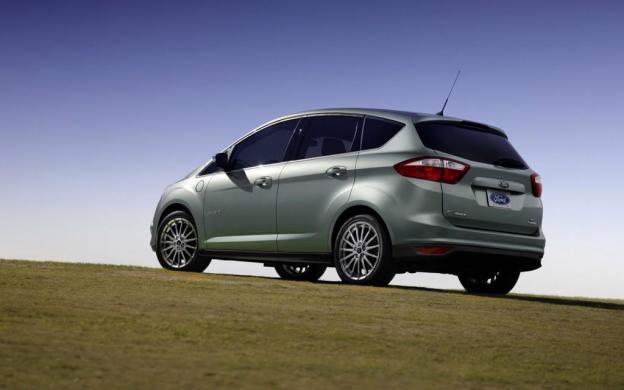 Ford continues to pull away from the Toyota Prius with its C-Max hybrids. The plug-in C-Max Energi just recevied a combined 100 MPGe rating from the EPA, putting the Ford ahead of the Toyota in yet another category.
Ford continues to pull away from the Toyota Prius with its C-Max hybrids. The plug-in C-Max Energi just recevied a combined 100 MPGe rating from the EPA, putting the Ford ahead of the Toyota in yet another category.
That 100 MPGe rating makes the C-Max Energi the most efficient hybrid on the market. The Prius plug-in is rated at 95 MPGe, while the Chevy Volt is rated at 94. Honda says its 2014 Accord plug-in will achieve 100 MPGe, but for now the C-Max is on top.
Even without cresting the MPGe century mark, the C-Max looks like a better value than the Prius plug-in on paper. The Prius has an electric-only range of 11 miles and a total range of 540 miles. The C-Max Energi can drive 20 miles on electricity and has a total range of 550 miles.
The C-Max Energi is powered by a 188 horsepower 2.0-liter gasoline engine and an electric motor, both of which are shared by the conventional C-Max hybrid. The C-Max Energi sports a larger lithium ion battery pack, though. Both models best the Prius and Prius plug-in’s 134 hp.
The added range, power, and MPGe come at a slightly lower price than the Prius plug-in. The Prius starts at $32,760, but is eligible for a $2,500 federal tax credit, bringing the price down to $30,620. The C-Max starts at $33,745, but it is eligible for a $3,750 tax credit, which brings the price down to $29,995.
The C-Max hybrid starts at $25,995, putting it pretty close to its plug-in sibling when tax credits are factored in. Regular hybrid buyers won’t get 100 MPGe, but they will get 47 mpg in all three categories (city, highway, combined) and a 500-mile range.
That puts the C-Max hybrid ahead of the similarly high-roofed Prius V (44 city, 42 highway, 40 combined) and just behind the regular Prius (51 city, 48 highway, 50 combined).
With the fuel economy and price races so close, buyers may look to differences in body style to make their choices. The C-Max is basically a taller version of the Focus, in the same way that the Prius V is a taller version of the original Prius. With standard leather seating for five, the C-Max might be a nicer place to be than a Prius, and it will definitely trump Chevy’s four-seat Volt.
With the Ford C-Max Energi and Toyota Prius plug-in, buyers have two very good choices. The Ford’s 100 MPGe rating means that it is starting to look like the better of the two.


